Unlock Expert Advice with Zero Commitment.
We’ve Eliminated the Barriers.

A study by Statista shows a significant number of IT and software projects fail due to a lack of proper planning and unclear project goals.
Let’s face it! When it comes to kicking off a software development project, bypassing the discovery and planning phase is like constructing a skyscraper intuitively without a robust architectural plan. Many software development agencies out there jump headfirst into a project with zero foresight or no consideration of the requirements and deliverables.
Of course, we cannot blame them directly. The inexperience in running the discovery process, lack of resources, pressure to deliver the software product within a short span of time, and changing requirements are some of the reasons why agencies do without the discovery phase.
Running the discovery and planning phase is not just integral to a software development company but also to the client, as it gives him the opportunity to brainstorm with an experienced Business Analyst and solidify his project requirement. This, in turn, reduces cost and improves the chances of successful product development.
In this blog, we will discuss why it is preferable to leave this phase to Unified Infotech. As an enterprise software consulting company, with more than 12 years experience in performing project discovery, we have a rich portfolio showcasing complex software product development.
But first, let’s delve into the different stages of the software development life cycle.
Software development is a long, drawn-out process with numerous steps, involving the Discovery, Analysis, Design, Development, Testing, and Maintenance phases.
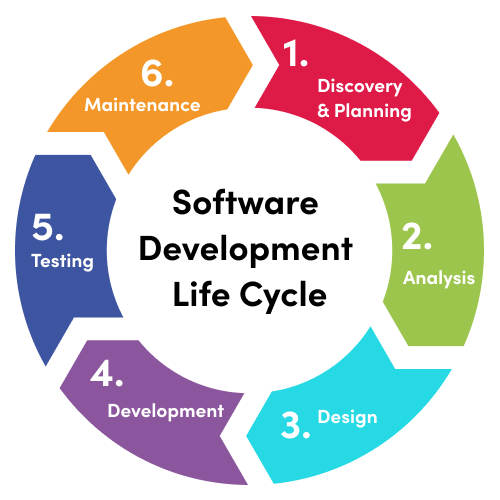
Of course, depending on your project-specific requirement, some of the stages stated above may change. You must work closely together with your software development partner to create a thorough product development plan after the product discovery phase. It will set the tone for the rest of the software development lifecycle.
The following diagram shows the important phases that a software project typically goes through after the discovery phase is completed and what function it serves.
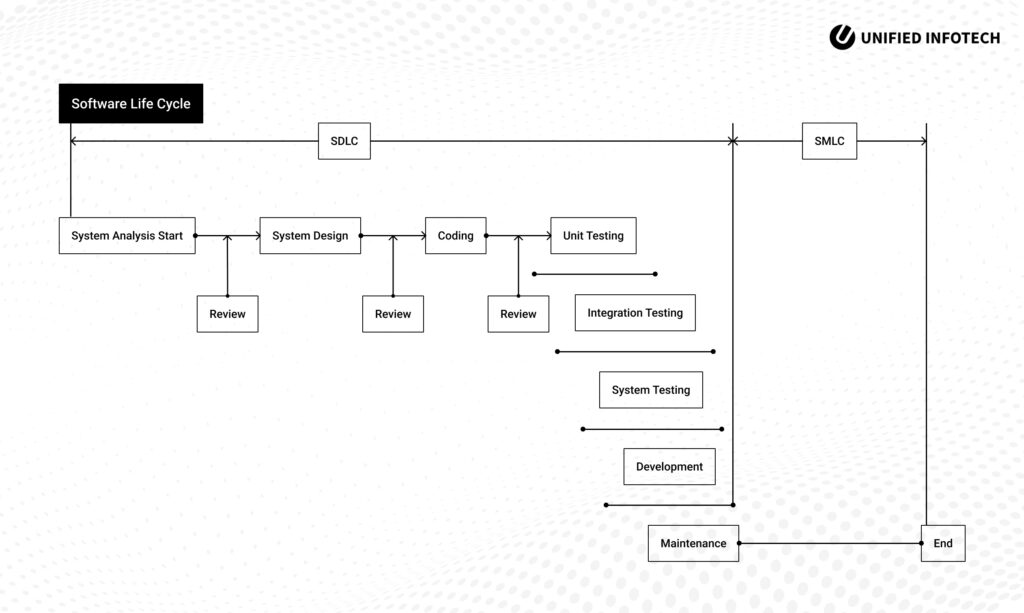
The discovery phase, sometimes called the scoping phase, is an initial step in the software product development process wherein the primary goal is to have a clear idea about the end user and also determine the project scope and objectives, identifying the associated risks.
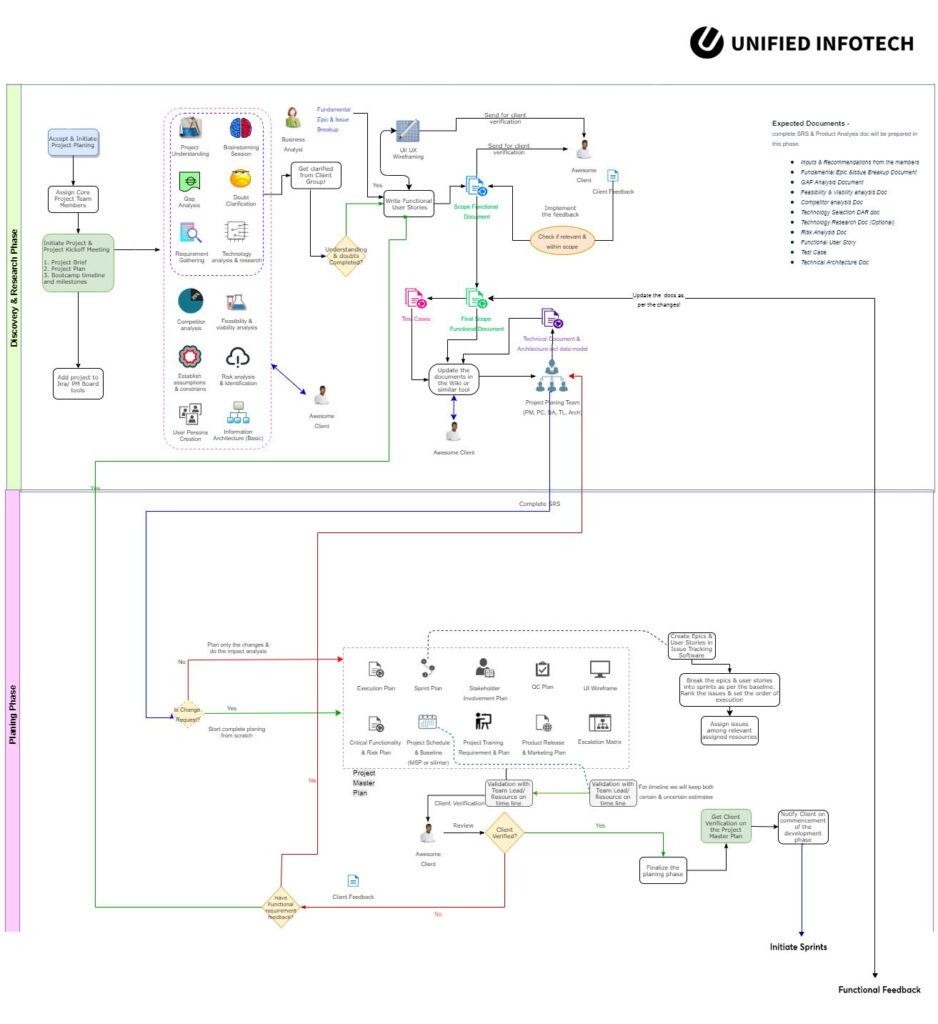
#Discovery and Planning Phase
This software development stage involves extensive planning, investigation, information gathering, and analysis by the senior members of the discovery team. The viability, practicability, and usability of the product concept are evaluated at this stage.
| # | Member | Responsibility |
| 1 | Product Owner | Gives overall direction to the product. |
| 2 | Account Manager/ Sales Executive | Overall check and doubt clarification as required. |
| 3 | Project Manager |
|
| 4 | Project Lead |
|
| 5 | Business Analyst |
|
| 6 | Solution Architect |
|
| 7 | Tech Lead |
|
| 8 | Test Lead |
|
The discovery and planning phase of the software development process helps in
The objective of the Project Discovery & Planning Phase/ Sub Process is to make sure that the dev team understands the project well enough before starting the detailed analysis and screen designs. At Unified Infotech, our objective at this phase is to understand the project from a relatively high level and validate all the information the dev team has got so far.
At Unified Infotech, we follow an agile approach to software product development. Here’s a detailed breakdown of how our discovery process works:
Stage 1: Identification of Stakeholders and Creating the Discovery Team
Members of the discovery team have a range of interests and expertise. The kind of project and experience they bring to the table determines whether they are included in the team. The first stage is to interview stakeholders.
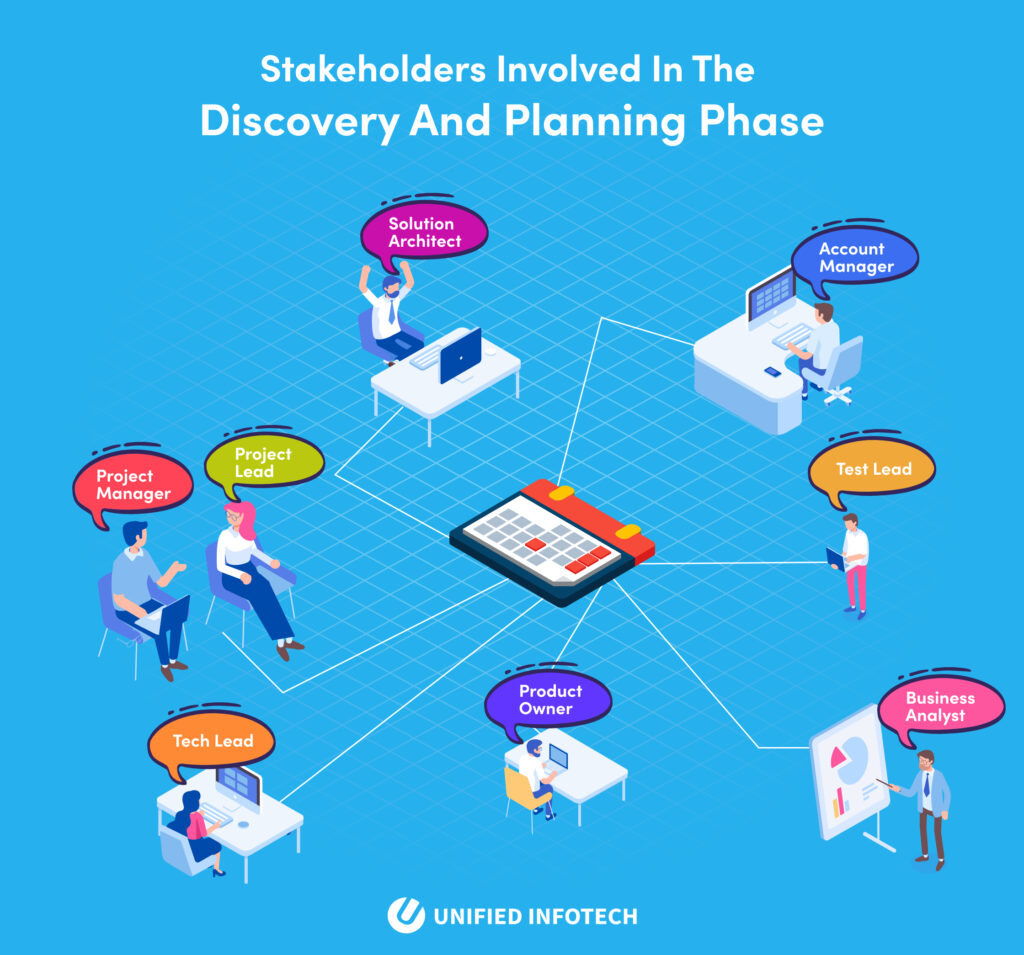
The project manager’s role is to discuss with the client the specifics of the project and then sit down with the discovery team to make sure all of their questions are addressed. He ensures that roles are clearly defined and that everyone is on the same page.
This establishes the project’s tone and guarantees that everyone is aware of their responsibilities from the discovery phase of the project.
Stage 2: Gathering Functional and Non-functional Requirements
We take the time to process all of our clients’ requirements after having a brainstorming session with the stakeholders. After gathering all the information, we create a high-level PRD (product requirement document) reflecting all the technical specifications for the future software product.
A typical PRD lists out the product description, product goals, competitors research, target audience, scope of work, roles description, functional and non-functional requirements, technical architecture, and risks involved. This makes things clearer to us and aids in our analysis of the requirements needed to effectively execute the project.
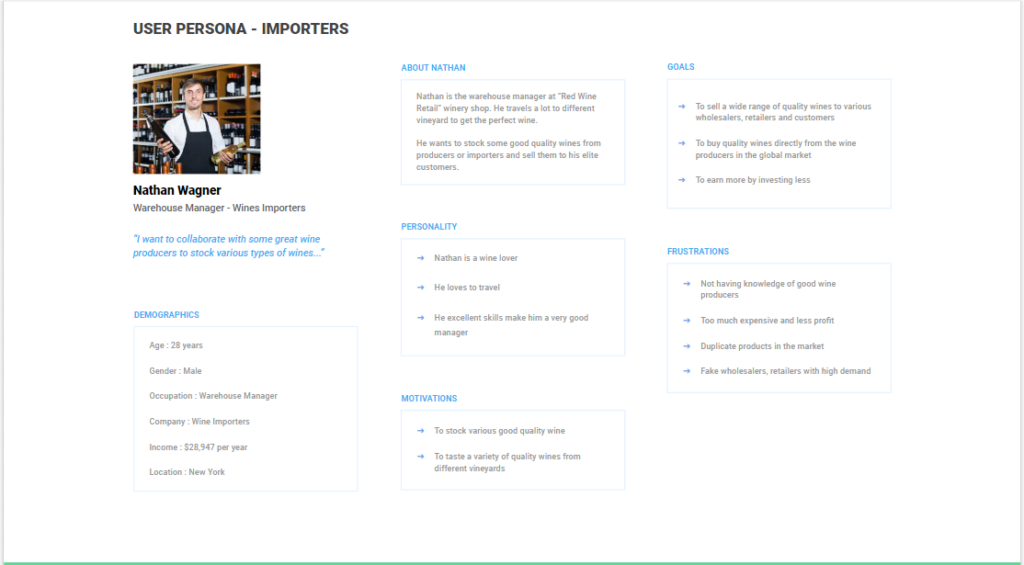
#Sample User Persona
Using the requirements, we can plan the resources that will be needed, the anticipated time frame, and the prices. Our team at Unified Infotech makes sure that we never start a project without thoroughly gathering our clients’ requirements.
Stage 3: Competitor Research and Analysis
We do this by conducting market research and examining similar software products developed in the industry to establish project expectations and establish standards.
Competitor analysis is focused on other software agencies that operate in the same market. Finding out the level of quality that our competitors uphold and the types of software products they produce is crucial during this stage of the discovery phase.
This stage also helps us understand pricing variations and enables us to set a competitive rate for clients.
Also, we can discover areas for improvement that your rivals are missing through competitive research.
Stage 4: Empathy Mapping
We use empathy mapping to visualize user attitudes and actions, helping UX teams in developing a thorough understanding of end users.
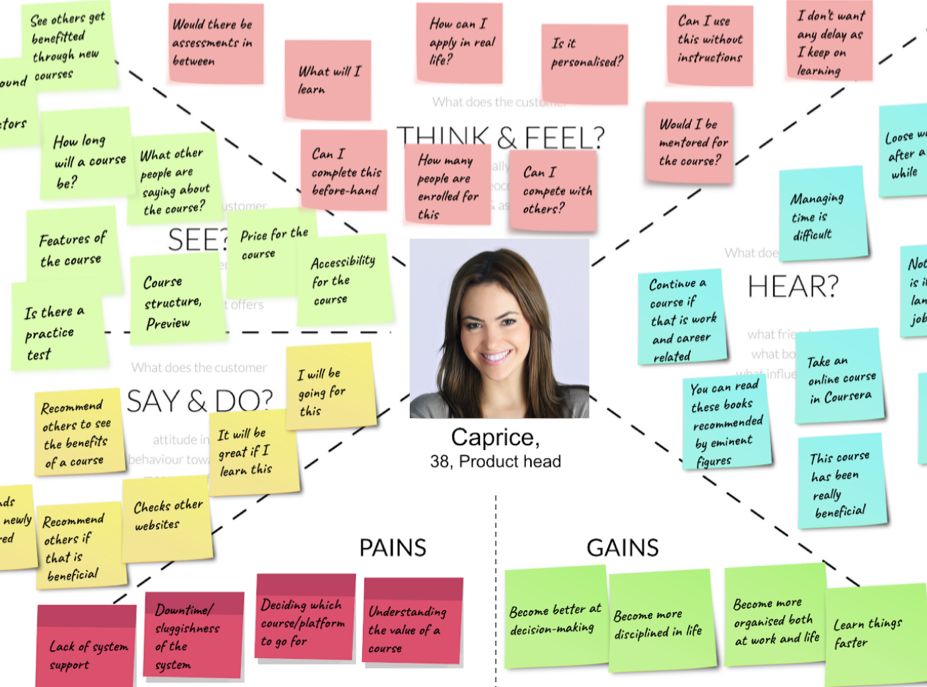
The mapping procedure also identifies any gaps in the user data that exist. Empathy mapping works best when utilized early in the design process in user-centered design.
Stage 5: Low-Fidelity Wireframing and Mind Mapping
At this stage, we use quick, low-cost techniques to produce early variants of a product or design. Before committing to a more intricate and polished design, these rough and basic wireframes are used to test and assess concepts.
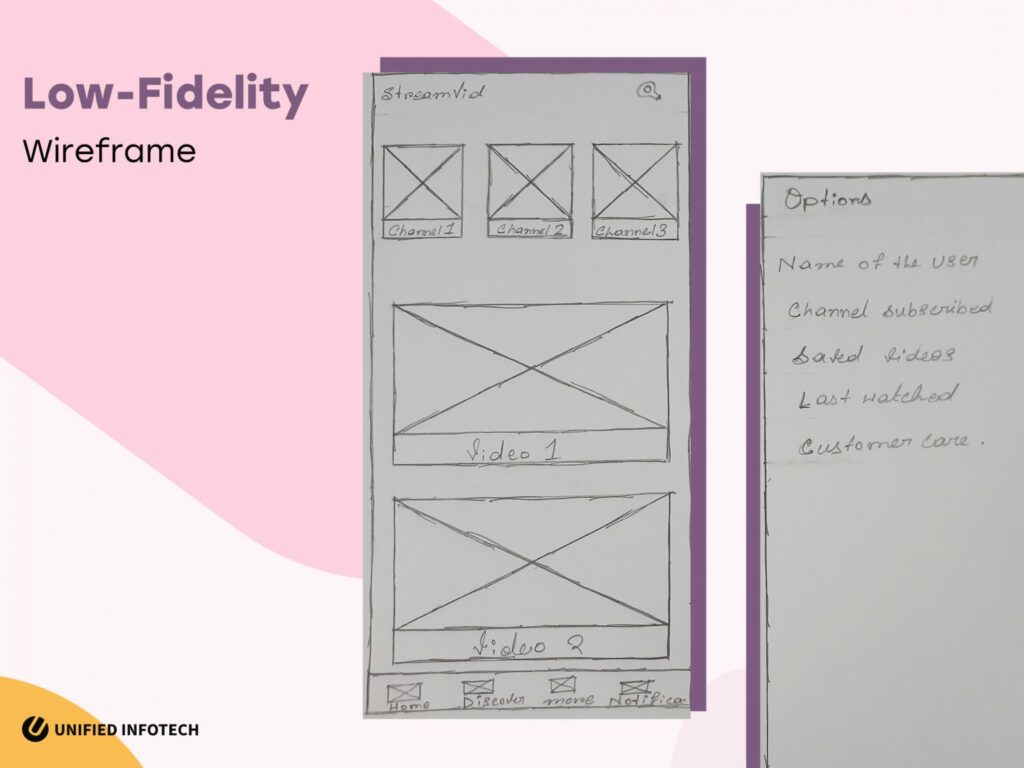
It considers user requirements and user journeys. Our UI/UX design team now focuses on the product’s usability, the optimal navigation method, and creative design.
Stage 6: Capturing Requirements through Epic Mapping (SWOT Analysis)
Our Agile team decides what to build and keep visible using epic maps. A user-centered conversation, teamwork, and feature prioritization are made possible by an epic map, which aligns and directs iterative product development.
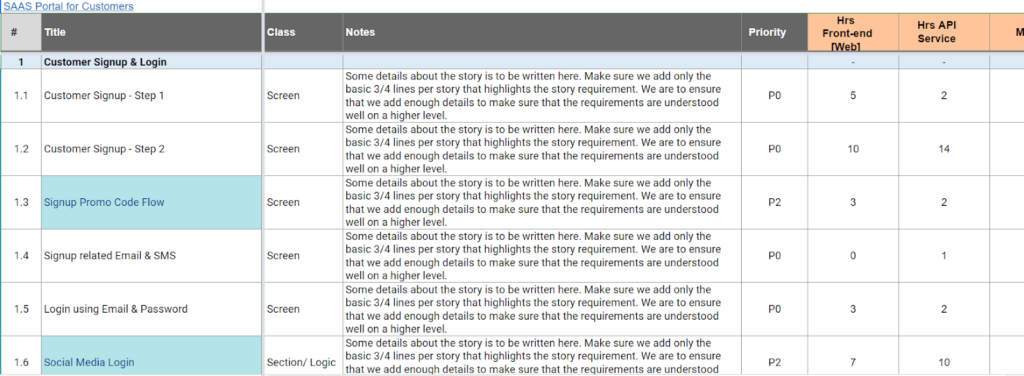
#Epic Mapping for a Sample Project
Since all epics and their progress are found in one location, it offers us a better understanding of what has been accomplished and what is still pending. Our goal is to divide work into manageable deliverables so that big projects are finished really quickly and that we can consistently deliver value.
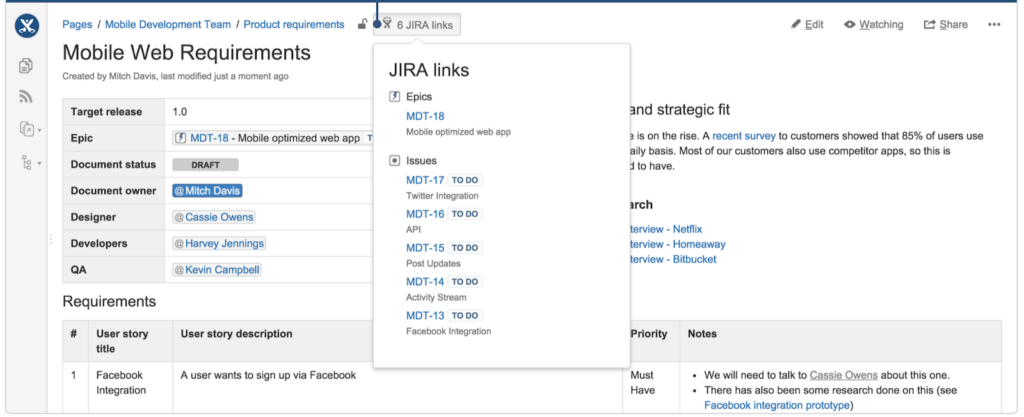
Stage 7: Feedback from the Client and Approval
Getting customer feedback and approval all comes down to matching your work up with their vision and expectations. This implies that client approval can occur at various project stages and for various reasons. Customer approval and feedback assist us in
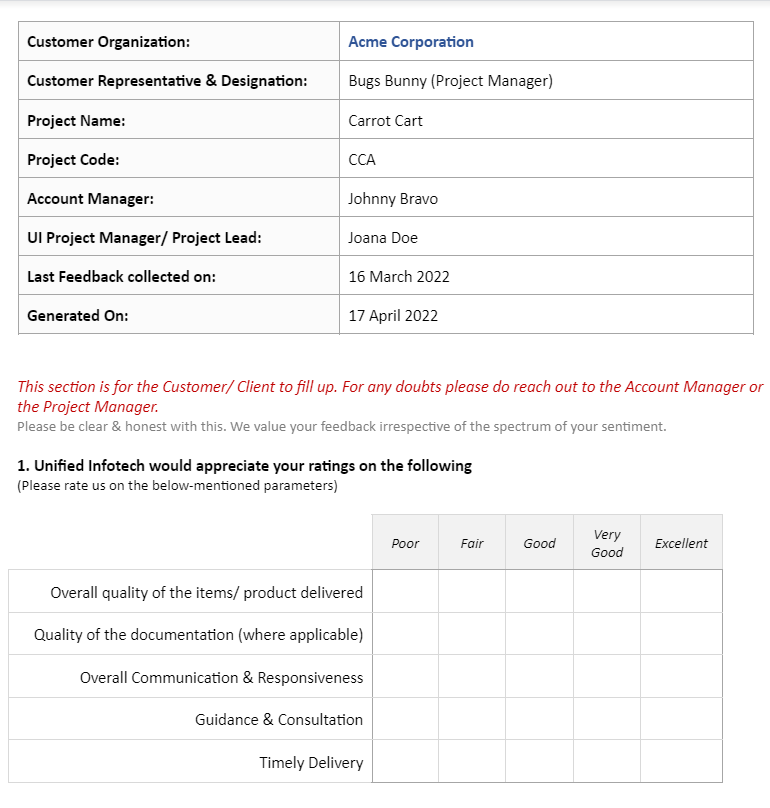
Here we have a list of all the external deliverables of the project and/or service. However, critical internal deliverables can also be included in this section.
| # | Item Description | Planned Delivery Date | Delivery To | Quantity |
| 1 | Project Plan (Client Version) | Client | ||
| 2 | Epic Mapping | Client | ||
| 3 | Typical User Journey & High-level product flow | Client | ||
| 4 | User Types/ Persona | Client | ||
| 5 | User Stories | Client | ||
| 6 | Assumptions & Constraints | Client | ||
| 7 | User Stories (Epics, Issues & Sub Issues including detailed notes) | Client | ||
| 8 | Design Document | Client | ||
| 9 | Lo-Fi Wireframes | Client | ||
| 10 | Screen Designs | Client |
1. Rebuilding a legacy system
Reviewing the old code in this case and using other methods of discovery help define the scope of the transformation and understand the system’s existing condition, strengths, and weaknesses. Domain experts offer suggestions for enhancement, identify potential bottlenecks, and provide the most practical solutions. Critical decision-making by the project team, the company’s higher management, marketers, and others help facilitate a clearly-defined scope of work.
2. Developing a complex and innovative software
Our team of experts offer the necessary consultations, research, and support for cutting-edge software development if the desired solution integrates distinctive combinations of third-party APIs, software libraries, or other cutting-edge or complex technology.
3. Vague or evolving software development
Clients sometimes have a fantastic high-level business idea but are unsure of how to effectively meet the needs of the end users. The discovery phase enables future product planning from the user’s point of view, ensuring user retention, and loyalty in the long run.
4. Project requiring Proof of Concept
Proof of concept is evidence that the solution we provide can be used and be successful from a business standpoint. A PoC will assist in determining whether the solution is practical if it makes use of cutting-edge tools or APIs that have never been applied in this way.
Instead of spending time and money on a possibly unsuccessful product, the discovery stage’s research of the business case, the competition, and the target market enable the quick invention of solutions based on market demand.
5. Limited budget
Experienced professionals in our team assist in defining the product’s fundamental architecture and functionality throughout the project discovery phase, eliminating any unnecessary elements. After assessing the cost of the product development or extension, they can make recommendations for methods to cut total costs and issue warnings about potential hazards and hidden costs that could result in budget overruns.
Undoubtedly, one of the most crucial phases of any software development project is the discovery and planning phase. It has a direct impact on how your product will function, how it will appear, and how it will help your organization achieve its goals.
We’ve Eliminated the Barriers.
We stand by our work, and you will too.